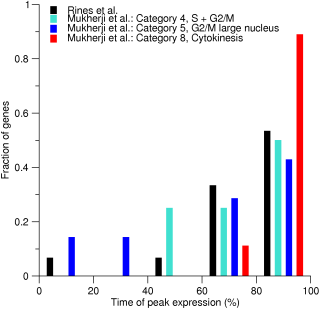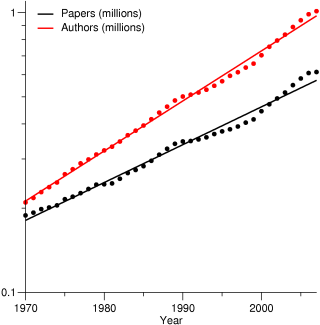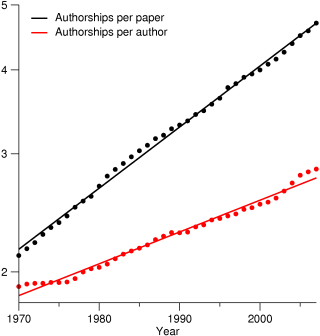This post might be considered off topic since it is about a paper that is unfortunately neither buried nor treasure. I would rather describe it as “organic fertilizer that has come into contact with a rotary air-circulation device”.
The paper that I will dissect is “Mitochondria, the missing link between body and soul: Proteomic prospective evidence” by Mohamad Warda and Jin Han. This review is at the time of writing published in electronic form by the journal Proteomics (ISI impact factor 5.735). It was aptly described as “A baffling failure of peer review” by PZ Myers on his blog Pharyngula, which led to a flash mob of researchers (including me) quickly identifying several flaws, any one of which should in my view be sufficient to cause the journal to retract the paper:
- Warda and Han twice suggest that mitochondria provide a link between body and soul, but they never provide any argument for this.
- They claim to present data that disproves the accepted endosymbiotic theory for the origin of mitochondria. But in reality they present no such evidence.
- They promise to replace this theory by “a more realistic alternative”. The alternative turns out to be “a mighty creator”, or in other words Intelligent Design.
- To support these truly remarkable claims, the authors misrepresent the results of cited references. Some of these references are even completely unrelated to the topic at hand.
- Entire sections or paragraphs of the paper are plagiarism of other researcher’s papers and from the website of another group. Not only is this material not presented as quotations, the sources are not even cited.
- Finally, numerous sentences have been copied verbatim from the cited sources. This may be partly excused by the authors borrowing better English, but I nonetheless consider it an unacceptable practice especially in reviews.
Note how I use block quotations below to show which parts are not my own words. That is what Warda and Han should have done to avoid their biggest problem: being accused of plagiarism. Let us start by looking at the first sentence of the abstract:
Mitochondria are the gatekeepers of the life and death of most cells that regulate signaling, metabolism, and energy production needed for cellular function.
This sentence is identical to the first sentence on the webpage of a competing group, namely the Mitochondrial Research & Innovation Group at University of Rochester Medical Center. The rest of the paragraph from the webpage can be found later in the paper by Warda and Han:
Recent scientific studies show that mitochondrial dysfunction is more commonplace than previously thought and that substantial mitochondrial involvement is present in many acute and chronic diseases. Mitochondrial dysfunction is now implicated in a range of human diseases, including aging, diabetes, atherosclerosis, heart failure, myocardial infarction, stroke and other ischemic-reperfusion injuries, neurodegenerative diseases including Alzhiemer’s and Parkinson’s diseases; cancer, HIV; sepsis and trauma with multiorgan dysfunction or failure. Some rare mitochondria diseases (e.g., MELAS, Kearns-Sayre) are associated with large deletions in the mitochondrial genome. More recently, the so-called OXPHOS diseases that reflect a limited capacity to produce the energy needed to respond to normal stress conditions.
However, most of the plagiarized material is not from webpages; it is from peer-reviewed papers of other researchers. For example, the two paragraph below appear to originate from the paper “Peroxisome Proliferator-Activated Receptor gamma Coactivator-1 (PGC-1) Regulatory Cascade in Cardiac Physiology and Disease” published by Brian N. Finck and Daniel P. Kelly in the journal Circulation:
Emerging evidence supports the notion that derangements in mitochondrial energy metabolism contribute to cardiac dysfunction [186]. For example, human mitochondrial DNA mutations resulting in global impairment in mitochondrial respiratory function cause hypertrophic or dilated cardiomyopathy and cardiac conduction defects [187, 188]. Mutations in nuclear genes encoding mitochondrial fatty acid oxidation enzymes may also manifest as cardiomyopathy [189, 190]. Interestingly, cardiomyopathies resulting from inborn errors in mitochondrial fatty acid oxidation enzymes are often provoked by physiological or pathophysiological conditions that increase dependence on fat oxidation for myocardial ATP production such as prolonged exercise or fasting associated with infectious illness [190,191].
A causal relationship between mitochondrial dysfunction and cardiomyopathy is also evidenced by several genetically engineered mouse models. Targeted deletion of the adenine nucleotide translocator 1, which transports mitochondrially generated ATP to the cytosol, leads to mitochondrial dysfunction and cardiomyopathy [192]. Mice with cardiac-specific deletion of the transcription factor of activated mitochondria, which controls transcription and replication of the mitochondrial genome, also exhibit marked impairments in mitochondrial metabolism, severe cardiomyopathy, and premature mortality [193]. Cardiomyopathy and/or conduction defects are also observed in several mouse models with targeted deletion of specific fatty acid oxidation enzymes [194, 195].
I discovered these plagiarized sections myself, but they only scratch the surface and pale in comparison to the amount of copied material identified by others. I should make clear that I do not blame the reviewers for not discovering this; their job is to check the scientific quality of the material presented, not to detect fraudulent or plagiarized material.
The editor and the reviewers are not off the hook, though. Interspersed between the sensible review material, much of which has been copied from elsewhere, there are a few sections that are “a mélange of truths, half-truths, quarter-truths, falsehoods, non sequiturs, and syntactically correct sentences that have no meaning whatsoever” (to use the words of Alan Sokal).
The first of these is the following sentence from the abstract:
These data are presented with other novel proteomics evidence to disprove the endosymbiotic hypothesis of mitochondrial evolution that is replaced in this work by a more realistic alternative.
Clearly the editors and the reviewers should have examined the evidence for such an exceptional claim. The “evidence” that supposedly disproves the serial endosymbiotic theory (SET) of mitochondrial evolution is presented in section 3.4, which after explaining the theory makes the following baffling statement:
The proof of SET was based on the parallel connection between plant mitochondrial and phage T4 genome replication [107, 108] …
This is simply not true. First, the scientific method can never prove a theory. Second, the similarity between the replication of mitochondrial and phage T4 genomes is completely irrelevant with respect to the endosymbiotic origin of mitochondria. Third, reference 108 is about chloroplasts and not mitochondria.
Next, the authors try to convince the reader that people are still debating the validity of the endosymbiotic theory:
Therefore, the debates concerning the mitochondrial endosymbiotic hypothesis recently terminated with many questions still left unanswered [111].
Reference 111 is a paper in Cellular Immunology by Gray and coworkers with the title “Modulation of CD8+ T cell avidity by increasing the turnover of viral antigen during infection”. It has nothing to do with the evolution of mitochondria.
The authors go on to recite the well known facts that the vast majority of mitochondrial proteins are encoded by nuclear genes and that most bacterial genes do not match within the mitochondrial DNA. They then give a long description of how tightly integrated mitochondria are with the rest of the cell and use the tired old argument of irreducible complexity to dismiss the endosymbiotic theory. Needless to say, the authors have what they consider to be a more realistic explanation:
Alternatively, instead of sinking in a swamp of endless debates about the evolution of mitochondria, it is better to come up with a unified assumption that all living cells undergo a certain degree of convergence or divergence to or from each other to meet their survival in specific habitats. Proteomics data greatly assist this realistic assumption that connects all kinds of life. More logically, the points that show proteomics overlapping between different forms of life are more likely to be interpreted as a reflection of a single common fingerprint initiated by a mighty creator than relying on a single cell that is, in a doubtful way, surprisingly originating all other kinds of life.
In other words: “God did it”. If I can read correctly, the authors here reject not only the endosymbiotic origin of mitochondria but also the common ancestry of eukaryotes. And as if this was not enough, the authors end the paper with the following bold conclusion that also explains the mysterious title of the paper:
We realize so far that mitochondria could be the link between the body and this preserved wisdom of the soul devoted to guaranteeing life.
I am speechless. As anyone who knows me can attest, that very rarely happens.
Edit: The paper has now been retracted, but there are still many open questions as to how it got accepted in the first place.
 Cite this post
Cite this post

 Cite this post
Cite this post









